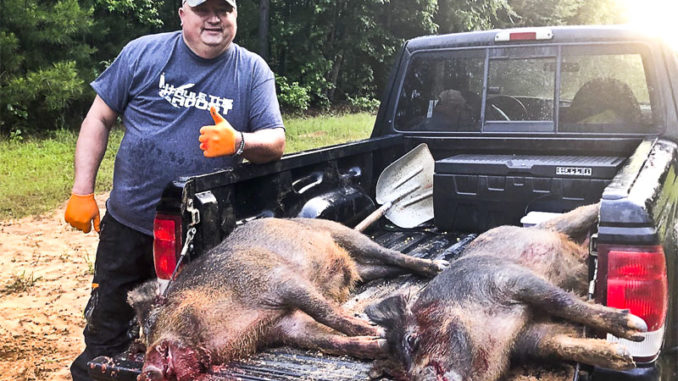
Trail cameras that text your phone, remote-controlled traps are part of a system for taking down the wild porkers that are overrunning Louisiana
Tiger Bend Outdoors is in the middle of Louisiana’s best deer hunting woods in Union Parish, but the past three or four years, water-cooler talk hasn’t been as much about trophy deer as it has been something else.
“The talk is more about feral hogs than it is deer now,” said Peyton McKinnie, who owns and runs Tiger Bend along with partners Bryan Tucker and Nathan Pilgreen. “More and more people come up and talk about how they didn’t see any deer, because once the hogs showed up, the deer were gone. It’s driven some people away from deer hunting, and it’s not getting better. It’s getting worse.”
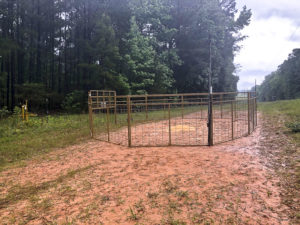
The Tiger Bend trio decided to do something about it; they became high-tech hog hunters. Feral hogs are tearing up property, destroying deer plots and wreaking havoc. It doesn’t appear that anyone from wildlife officials to landowners really have any proven, effective way to slow down the explosion of the destructive porky pests.
Until now.
“We’ve hooked up with Cory Gilbert of Hogg Boss in Bastrop and used his system this year with remarkable success. It’s fun, and it’s helping improve our deer woods. And it’s actually as addictive as turkey hunting,” McKinney said.
Hogg Boss
The Hogg Boss system isn’t easy, but it’s simple. First, you locate an area where hogs are hanging around. Second, you start baiting the area, and after they have come to it for a few days, you set up a portable fencing system and leave the gate open. You set up the trail cameras, connect them to your cell phone and then wait.
Here’s the high-tech part. When a sounder of hogs starts coming, trail-camera photos are texted to your phone in real time. When they get comfortable and are feeding in the pen, you just dial a number, and the electronics closes the gate.
Hogs caught.
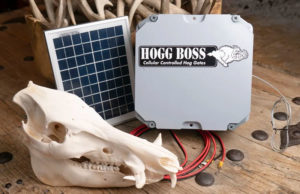
And unlike hunting hogs with dogs and getting one or two, the Tiger Bend team has been getting them 15 to 20 at a time. They’ve taken out almost 1,000 already this year. They removed 70 from a single 1,000-acre hunting club.
“Here’s the deal,” McKinney said. “You just set it and go about your business. When the camera activates, your phone dings just like a text message coming in. I’ve gotten dinged at 3:30 a.m. and shut the gate on them without having to get out of bed.”
Once alerted, McKinnie, Tucker and Pilgreen will go to the pen, put down the hogs, clean them and get the meat to somebody who will use it. They have a waiting list.
How it works
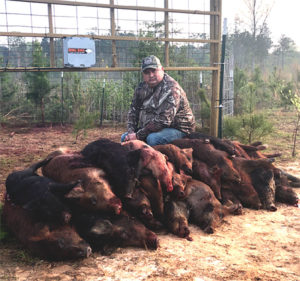
McKinney summarized the “how-to” for using a system like Hogg Boss. First, find where the hogs are feeding. Bait them up with corn and rice bran. He also uses Delta Magic Hawg Attractant in strawberry or green apple scent to get the aroma out to the hogs. He also uses a strawberry scent spray on the gate and where he walks so the hogs won’t be alerted to the presence of humans.
Then, you keep your phone by your side and, when the whole group of hogs is in the pen; drop the gate remotely.
They are now using a drone to fly low over hunting areas and clearcuts to look for fresh hog sign. They can cover a 600-acre clearcut and pinpoint hog activity from the tailgate of a pickup truck by using the drone.
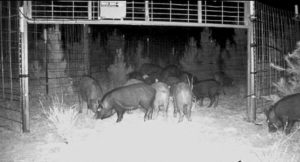
“Don’t get me wrong. This isn’t easy,” he said. “But if we don’t do something to stop the explosion of these big, nuisance hogs, not only are our outdoors going to be ruined, but they are going to start taking over yards and gardens in these small rural communities. We’ve already trapped hogs in the city limits and saved several people’s large yards from being totally destroyed by the hogs rooting for worms, soured acorns and the like. They will totally destroy a garden in a single night. They are hurting farmers and livestock producers’ fields and pastures.”
Hogs winning = hunters losing
Despite the extensive and growing damage caused by feral hogs, little is being done to really deter the destruction.
By the Louisiana Department of Wildlife and Fisheries’ own numbers, Louisiana hunters are not only losing the battle, they’re getting stomped in the mud by feral hogs and the lack of an effective effort to control them.
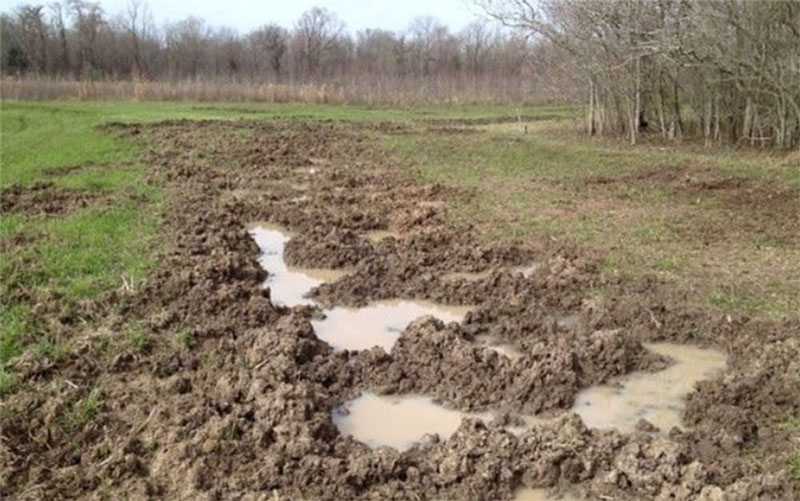
Feral hogs roam every parish; Louisiana’s population is estimated at 500,000. Statistics have determined that 75% of the population must be harvested to even maintain a static population. In Louisiana, recent reported harvests have been around 135,000 annually; that’s only 27%. So the pests here have literally gone “hog wild”.
“The leadership of the LDWF has got to be more aggressive in promoting this kind of effort to control these feral hogs,” McKinnie said. “It’s expensive for an individual to have to do it. They need to come up some sort of grant to help provide these traps and get them to people who are interested.”
McKinnie believes there could be some kind of bounty, and that local governments or the state would reap economic benefits by providing this type equipment and hiring people to use it.
“All the time, we hear the PR about wanting to get more people hunting,” he said. “Well, letting this problem go unchecked is leading to less people going hunting. It doesn’t take a rocket scientist to see that. And the damage to the economy is getting worse and worse every year.”
Quasimodo: The one that got away
Feral hogs are like deer and fish. The big ones have been around a while, and they are smart. There’s one hog that has shown up on Peyton McKinney’s trail cameras several times, but once the traps are set, he disappears. He’s a big humpback hog pushing 300 pounds. They call him “Quasimodo” because he’s kind of like the monstrous fictional character in the novel, Hunchback of Notre-Dame.
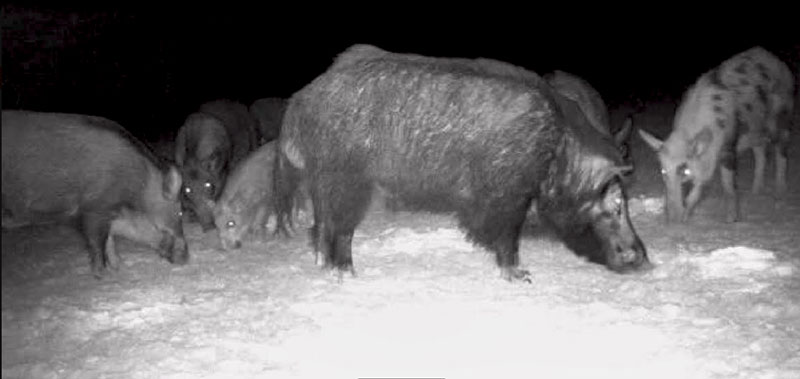
“Of all the hogs we have caught, none have been the great big boars with tusks,” he said. “We know they are out there, because they’ve been on camera, and other people hunting hogs with dogs are killing them. But they are very leery of the traps. They are like 150-class bucks. They don’t take chances. They’ll walk by the pen, but they won’t go in.”
McKinnie said they’ve come close on Quasimodo and aren’t going to give up, but he has turned out to be a tough opponent. He will feed with the others, but once the panels go up, he’s not going inside.